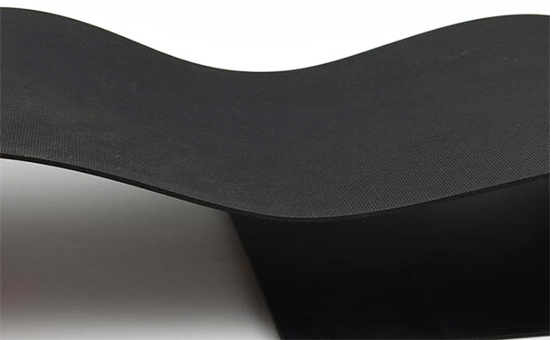
Rubber anti-corrosion lining is an unvulcanized, pre-vulcanized or vulcanized rubber sheet or rubber sheet that prevents corrosion of equipment. The traditional anti-corrosion lining is made of natural rubber and neoprene, but its corrosion resistance, permeability resistance and storage are poor. With the continuous development of anti-corrosion lining production technology, butyl rubber has become the main raw material for the production of anti-corrosion lining; butyl reclaimed rubber is used as a product of waste butyl inner tube processing, and it can be used as an alternative to butyl rubber in anti-corrosion lining. The purpose of reducing raw material costs is achieved in production.
Butyl reclaimed rubber inherits the basic performance characteristics of butyl rubber. It has good air tightness and high chemical stability. It can solve the problem of corrosion resistance and poor permeability resistance of natural rubber and neoprene anticorrosive lining, but it also retains Defects of the base rubber: poor adhesion, easy generation of air bubbles, and special attention to these problems in the production process.
1. Improve the adhesion between butyl rubber and metal materials
Butyl rubber and butyl reclaimed rubber are non-polar rubbers, which have poor bonding properties with steel and cement. When formulated in butyl anti-corrosion lining, it is necessary to use a suitable type of adhesive to improve butyl rubber and butyl. Adhesive properties between reclaimed rubber and other materials; butyl rubber and butyl reclaimed rubber and steel must be first surface treated to remove dust, oil and rust on the metal surface; after degreasing with trichloroethylene Sandblasting is further treated with 10% phosphoric acid prior to the use of the adhesive to further increase the bond strength of the compound used in the butyl anticorrosive lining.
2. Adjust the production process and formula to avoid bubbles in the anti-corrosion lining
There are many reasons for the appearance of bubbles in the butyl anti-corrosion lining, including raw material selection, formulation design, mixing operation, vulcanization process, etc., among which the anti-corrosion lining manufacturer who decides to use butyl reclaimed rubber must choose high fineness and no impurities. Butyl reclaimed rubber, avoiding the excessive moisture content of butyl reclaimed rubber or containing impurities, resulting in bubbles in the anti-corrosion rubber sheet; selecting a rubber compounding agent with less volatile matter and less water absorption, and ensuring butyl rubber and butyl reclaimed rubber Uniform mixing, full vulcanization (on the issue of avoiding bubbles in recycled rubber products, Xiaobian no longer elaborates, interested in searching for relevant articles in the station).
There is still a problem when using butyl rubber to produce anticorrosive lining. The butyl rubber itself has a slow vulcanization rate and needs to be vulcanized at a high temperature. However, high temperature vulcanization is prone to local scorch problems; butyl reclaimed rubber has better vulcanization performance than butyl rubber. The vulcanization speed is fast and the vulcanization reverse is small, which can improve the vulcanization performance of the butyl rubber compound and improve the production efficiency and the quality of the finished product while reducing the production cost of the butyl anticorrosive lining.
Exclusive original article [commercial authorization] reprint, excerpt and excerpt in any form are prohibited without written authorization. Focus on Hongyun rubber: learn the process formula and raw material technology of producing rubber products from recycled rubber to help you reduce costs and increase profits